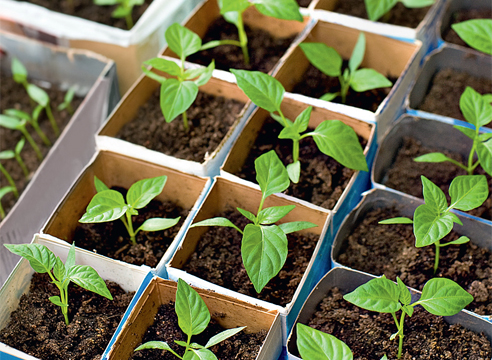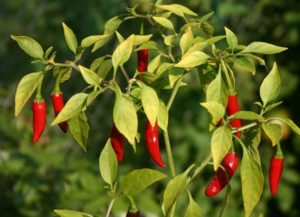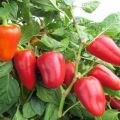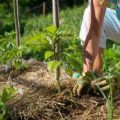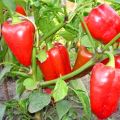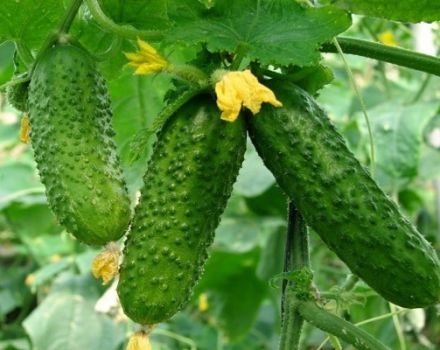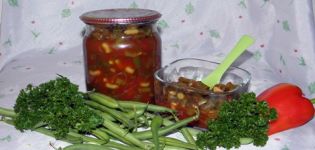How can you distinguish hot pepper seedlings from sweet ones, care and cultivation at home
When germinating seedlings, troubles of a very different plan can occur, when the gardener does not know how to distinguish hot pepper seedlings from sweet ones. One of them is the confusion that arises due to the fact that no marks were left to help identify the variety or type of plant. Sometimes such pieces of paper are destroyed, soaked, or simply lost.
It is especially offensive when, as a result of such confusion, it becomes impossible to determine the variety. It is not possible to distinguish bitter varieties from sweet Bulgarian ones.
Pepper types and their features
The modern agro-technical market presents a huge variety of pepper varieties as a vegetable crop. They are classified according to ripening time, skin color, number of seeds and other characteristics. However, all of these criteria can be part of two categories of plants grown both in open ground gardens and in greenhouses, where it is possible to create more favorable conditions for plants.
Vegetable peppers can be:
- Sharp. This is a species with medium-sized pods and a sharp, burning specific taste. The degree of manifestation of this symptom can be different. In science, it is customary to classify hot pepper pungency on a 10-point scale. The most pungent species are Tabasco and Chili.
- Salad sweet. The fruits are large, with a sweet taste. In some cases, a bitter aftertaste may appear even in sweet varieties, while the pungency is soft and not at all pungent.
To get fruits, the taste of which will fully correspond to the declared characteristics, it is necessary to grow spicy varieties separately from bitter ones. If plants are placed in separate greenhouses or on beds that are very distant from each other, there is no way, sweet and spicy varieties should be planted at a distance of at least 20 cm from each other.
If these conditions are not followed, the plants will be pollinated, and as a result, hot peppers will lose their sharpness, and sweet peppers will get a spicy taste. The seeds collected from the re-pollinated fruits will give an even more interesting harvest: the size of the fruit will be large and the taste will be very spicy. The crop will not contain even a hint of sweet taste.
How to grow hot peppers
Planting pepper seeds for seedlings begins after the start of the new calendar year.
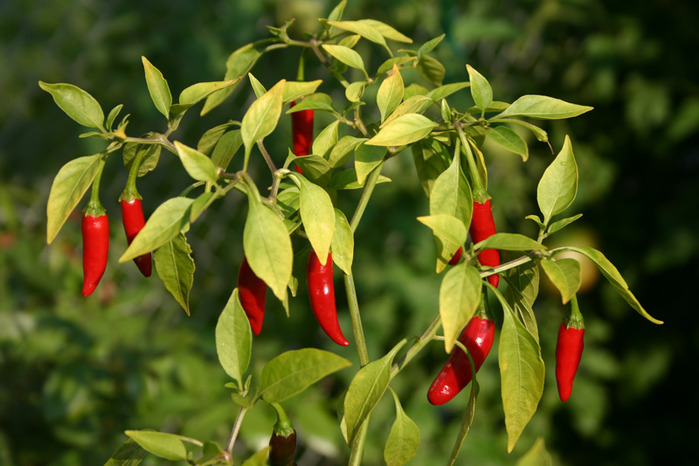
Gardeners begin to think about seeds, varieties and planting methods in the fall. Bitter pepper, which is one of the most wonderful garden crops, is not difficult to grow, although many are wary of this matter.
Planting scheme using drip irrigation
The easiest way to plant seeds of a bitter look, starting with germination in a flat container, at the bottom of which is a soft cloth or gauze, and on top of it are put pepper seeds for seedlings. Pour some water into the container, and put another layer of cloth on top to soak the pepper seeds before planting.
If the summer resident remembers how many days the pepper rises, then he must not forget about the need to create special conditions for germination.
It is necessary to place the container with seeds in a warm and bright place, for example, on a window, for a period of 2 to 3 days. During this period of time, data on air temperature must be maintained in the range of 20 - 25 ABOUTC, and when water evaporates in the container, its level must be replenished.
As soon as the seeds germinate, they are planted in the soil prepared in advance. Caring for pepper seedlings at home should be systematic, it is necessary to show knowledge of how often to water pepper seedlings.
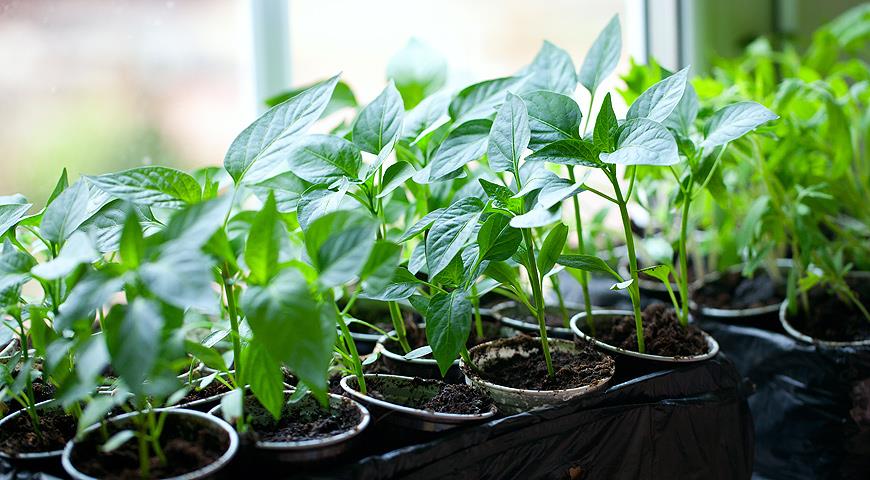
Before diving pepper seedlings correctly, you need to make sure that they are ready for this procedure. If the gardener wants to get the maximum number of bitter seed sprouts, you can use the second method, which will be discussed later.
Landing scheme
To achieve 100% seed germination, they can be treated with a special agent - a growth stimulator. This solution can be purchased at any specialized online store or hypermarket. At the peak of planting operations, it can be completely sold out, so the stocks of the drug must be replenished for the future and in advance. Preparing pepper seeds for sowing seedlings using this preparation will facilitate the cultivation of the crop.
A growth promoter will help increase the germination rate of seeds of any material. In addition, with its help, it is possible to improve the survival rate of plants during the picking and transplanting process. Knowing how to dive peppers correctly and how to process the seeds can avoid many growing problems. Planting seeds can begin when they are ready.
The sprouts treated with the stimulant will exhibit increased disease resistance. The seedlings will sprout faster and the yield will increase significantly.
How to grow bell peppers
It is possible to grow pepper seedlings at home subject to certain conditions, but first of all it is necessary to remember that it will be possible to remove a good harvest from the beds only if the plants planted in them were initially strong, strong, healthy, and the seed germination is good.
Achieving this goal is possible subject to certain growing rules and taking into account the features that every gardener must remember:
- Watering the plants should not be too frequent, preferably every other day. The soil should maintain a moderate level of moisture, it should not be allowed to dry out. Excess moisture will be signaled by a disease known as black leg. You can find out how often you need to water the bushes by looking at the condition of the soil. If the seedlings wither, watering must be increased.
- The soil in the row spacing needs regular loosening at a depth of no more than 5 cm, the frequency - before watering. Another culture may grow between the planted bushes, the root of which should not be damaged.
- Sweet pepper sprouts should receive minerals and vitamins in sufficient quantities. Seedling leaves may indicate a minimum of nutrients: they will begin to curl, change color, dry out or fall off the bush.
- Almost all varieties of bell pepper are pollinated, it is worth considering in advance about attracting insects to the site for pollination of the crop.
- Seedlings of hot pepper do not need pinching, therefore the thick lower leaves on the seedlings should protect the soil from drying out. If the summer is too hot and rainy, then its lower branches can be removed, because the plant can rot.

- The root system of the plant is delicate. In connection with this fact, transplanting and picking peppers are not well tolerated. The best option is to plant the plants in open ground in peat cups, in which the dive seedlings bloom.
- Peppers are delicate plants, easily susceptible to diseases, so it will be useful to carry out procedures for disinfecting seeds before sowing.
- If the air temperature drops below 13 ABOUTC. This is the minimum recommended temperature for pepper seedlings, which already has a detrimental effect on pepper seedlings - every summer resident knows what to do in this situation. With a bad weather forecast, the bushes must be covered with an agrospan, and if the garden bed is in a greenhouse, the room must be closed up to the windows.
In order to avoid cross-pollination between the rows of plants, you can place crops that are taller: corn, tomatoes, straight, not crooked sunflower.
Before growing a crop from seeds, the placement of these crops must be planned, otherwise the taste of the fruits will differ from planned.
Growing features
Seedlings of bitter and sweet peppers have their own characteristics. The general principles of cultivation are similar to those for growing other crops. However, in order to harvest a quality crop, you need to choose the right variety and know how to plant peppers for seedlings.
All varieties of pepper sold in agricultural stores are different from each other and are regionalized. For the southern regions, breeders have developed thermophilic and drought-resistant varieties. These species will easily endure hot weather, but the culture dies from excess moisture or lack of sunlight.
For the northern regions, the most frost-resistant varieties should be selected, and the sowing of pepper for seedlings should be carried out no later than mid-March.
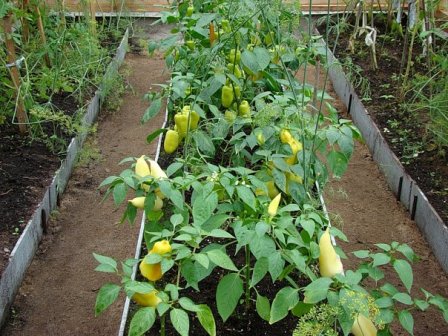
For Central Russia, it is better to plant crops in open ground in early June. If you plan to plant in a greenhouse, this can be done already in mid-May. Before planting a crop, the soil must be disinfected so that the seeds germinate better.
If you have questions, you can watch a video about pepper picking, which describes in detail the features of this procedure. There you can also find information on growing sweet pepper seedlings at home, find out when pepper seedlings dive.
How to distinguish hot peppers from sweet peppers
Seedlings must be signed, even if they are any other crop. Today, you can purchase a lot of auxiliary devices for the convenience of organizing agricultural technology for all types of crops. If the notes were made, but due to various circumstances they were not preserved, then you can resort to some tricks to determine which bush belongs to the sweet and which to the bitter variety.
Before you can distinguish sweet pepper seedlings from bitter ones, you should remember some tips:
- The first sign that will indicate that the bush belongs to any variety is the shape of the leaves, their color. In bitter varieties, the leaves are more elongated, and their length is greater than the length of the sweet leaves. The width of the leaves may vary. In sweet species, the leaf is wide, light and fairly short, hot pepper is distinguished by the elongation of the leaf and its special strength. If the seedlings of both types of peppers were kept in excellent conditions and grew strong, strong, then the visual method of identifying the variety can overshadow. You can use other options for this.
- It is possible to determine what kind of plant in front of the gardener is by such a sign as the taste of the leaf. Having broken off a small part, you can put it on your tongue and understand whether the released juice has a bitter taste.
- The formed flower buds will help determine the type of seedlings.Bitter peppers begin to bloom much earlier than sweet peppers, so if the seedlings have bloomed, then with great probability it can be argued that this is a spicy variety.
- To establish the species, you can conduct another experiment and taste the seed from which the seedlings were grown. It most often remains in seedlings on an already hatched sprout. This subject should be carefully removed and tasted. If the variety belongs to bitter, then the taste of the seeds will be very bitter.
- The thickness of the leg is a feature that distinguishes one type of pepper from another. The bitter leg is longer and thinner than that of the sweet. Some plants are crooked because the base is weak. However, if the bush was purchased and not grown independently, then by its appearance the plant may not correspond to the declared characteristics. It is best to pay attention to the leg before diving the seedlings and, of course, before landing in the ground.
If you need to distinguish between pepper seedlings, this can be done using these tips. Agronomists do not advise leaving this issue unattended, because such a neighborhood can lead to the appearance of a pungent taste in the fruits of grown mild peppers. To avoid cross-pollination, varieties must be planted at some distance from each other, not far from houses, in order to hide from the scorching sun.

